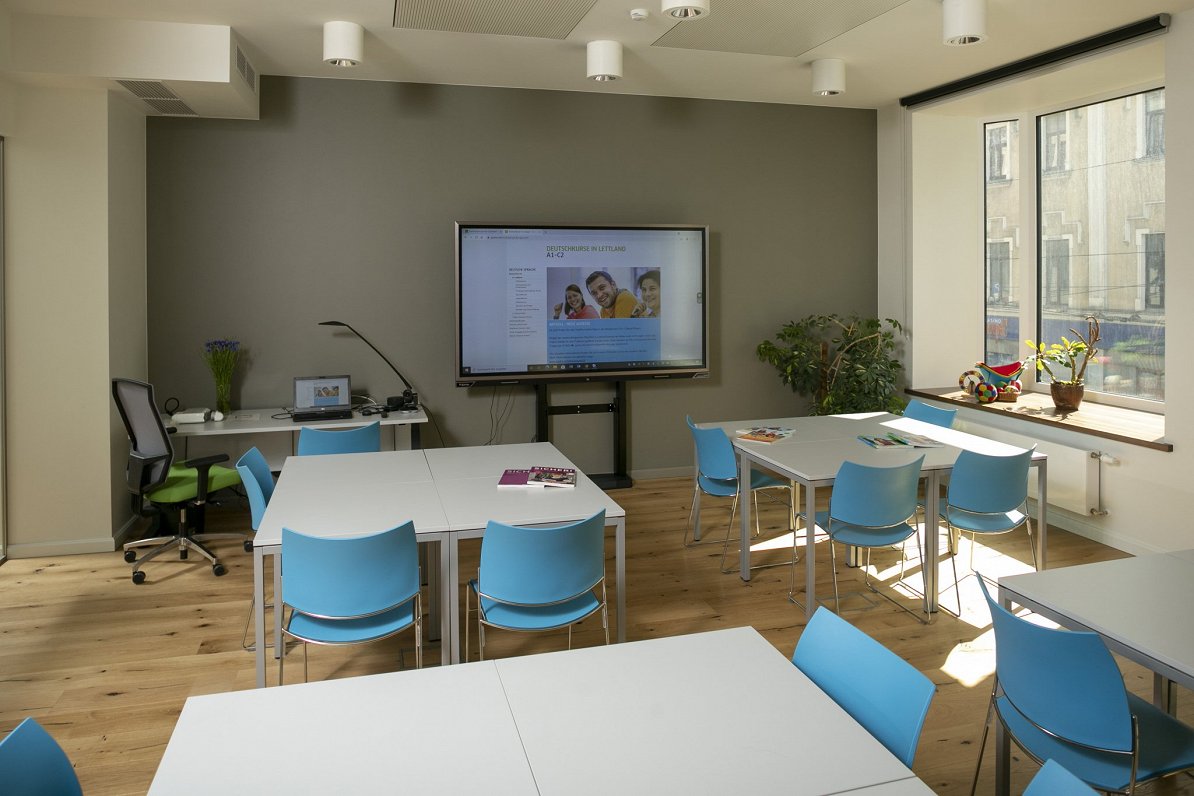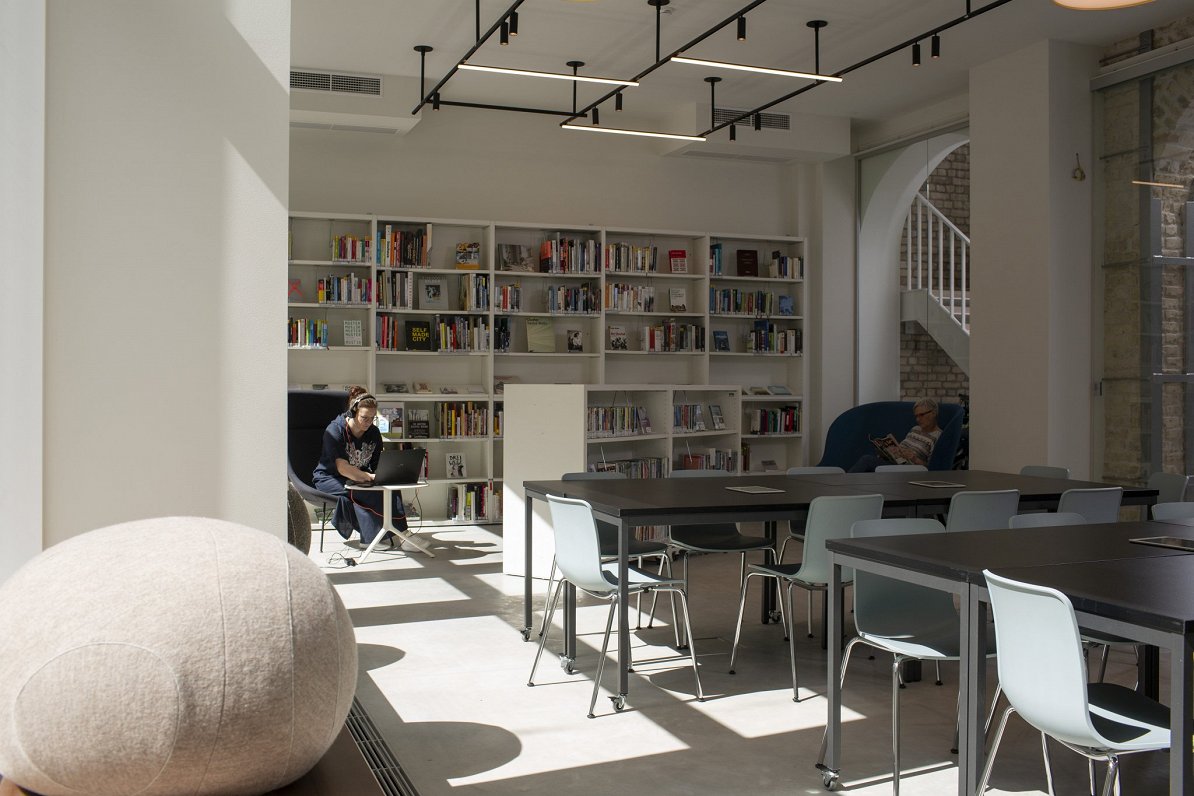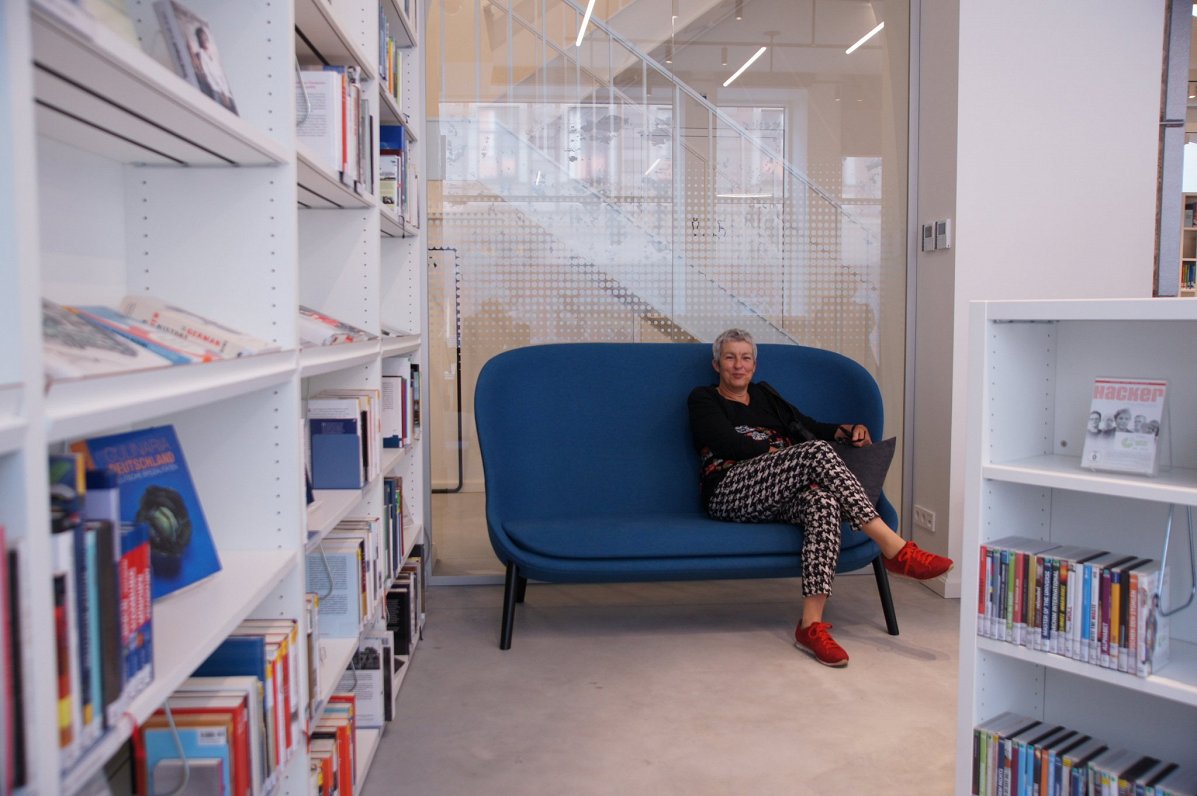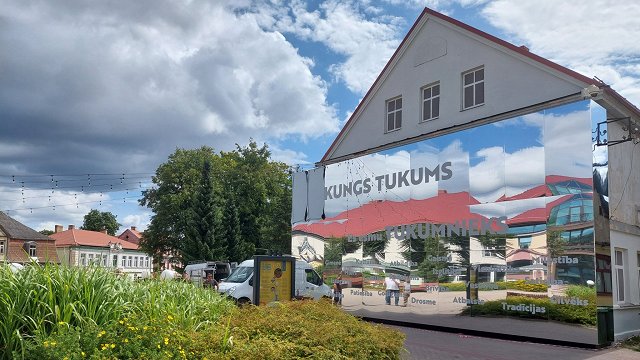For 27 years the Goethe-Institut was located in Riga old town right behind the parliament in Torna iela. Now the renowned German cultural institute moved to a new location and – after temporarily relocating for one year into the World Trade Center – found its home at Berga Bazars.
The inauguration of the new office in Marijas iela 13 k-1 took place on the evening of September 9 during a visit of the new Goethe-Institut President Carola Lentz on her first trip abroad since taking office in November 2020.
"The Goethe-Institut Riga has always been and will also in the future be a place where people of different cultures and different walk of life meet. We will continue to be an open discussion space and platform for cultural exchange and mutual learning about current topics from Germany and Latvia“, the institute's director Arendt Röskens told LSM at the sidelines of the opening event that was also attended by former Latvian culture minister and now MEP Dace Melbārde.
Getes Institut – as it is called in Latvian – was the first Goethe-Institut in the Baltics. It promotes the study of the German language and culture, and fosters international cultural cooperation. Established in 1993, the institute in its former somewhat hidden located premises in the back part of the Arsenals exhibition art hall hosted thousands of cultural event and activities. It also was home for a well-stocked library, numerous teacher-trainings and tens of thousands of students who learned German there.

All these elements will be also available in the new centrally and more visible located premises that stretch over three floors. The large multi-purpose room on the ground floor is used as a library with reading alcoves where visitors can sit and pursue the library’s books. The library’s collection was also modernised and reorganised: curated Spotify playlists replaced CDs, and the books available are mainly made up of contemporary literature and German as a foreign language.
Moveable glass walls allow to transform the bright space and to be divided into smaller units depending on need. The multi-purpose room can also used be for programme events, and for language instruction, while the classrooms for language learners located on the second floor also serve as conference room.
"It is a convenient, open and inviting place for communication“, architect Ilona Vaivade said during a tour through the new Institut.
The move has also brought not only changes in terms space and arrangement but also modernised the way the institute works: Instead of individual offices, there are now flexible workstations and creative offices where staff members from different departments are working together.
"Using digital means both for working and learning will play a central role for us and our activities – even after
the Covid-19 pandemic is over“, Röskens said.

The Goethe Institute is also stepping up efforts to encourage Latvians to learn German and restore interest in the common German-Latvian history. Latvia has traditionally had close ties to Germany, ever since its capital city Riga was founded by the German Bishop Albert from Bremen in 1201. But there are also many other places in the Baltic State that are linked to Germany. The influence can be seen at many corners – and with a multimedia app that helps users to explore the historical and cultural relationship between Germany and Latvia.
Both Latvian and German people can now learn more about their common history and deeply rooted connections from a new perspective with a free app launched by the Goethe Institut Riga: German Traces in Latvia.
"The German heritage is very present in Latvia. The idea of creating the app was simply obvious and we hope it will open up mutual curiosity to discover both well- known as well as not-so-well-known traces," Röskens said.
More than 50 traces about architecture, history or people are available in Latvian and German in the digital offering. Some of them will be brought to you by LSM also in English over coming weeks.



























